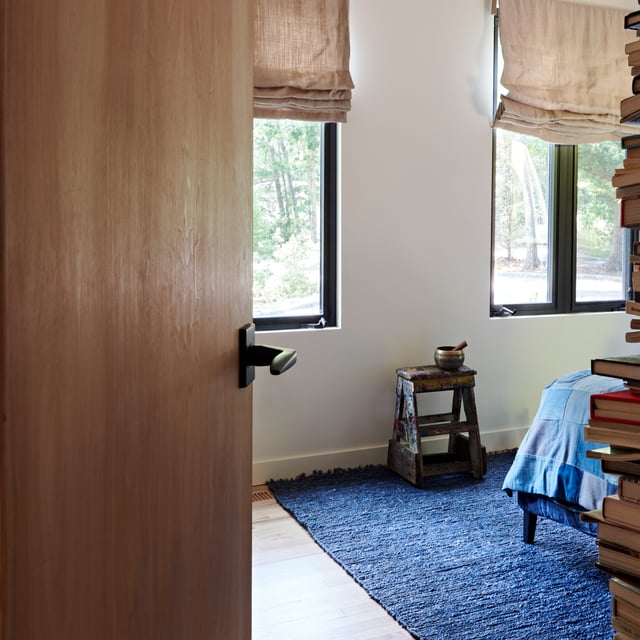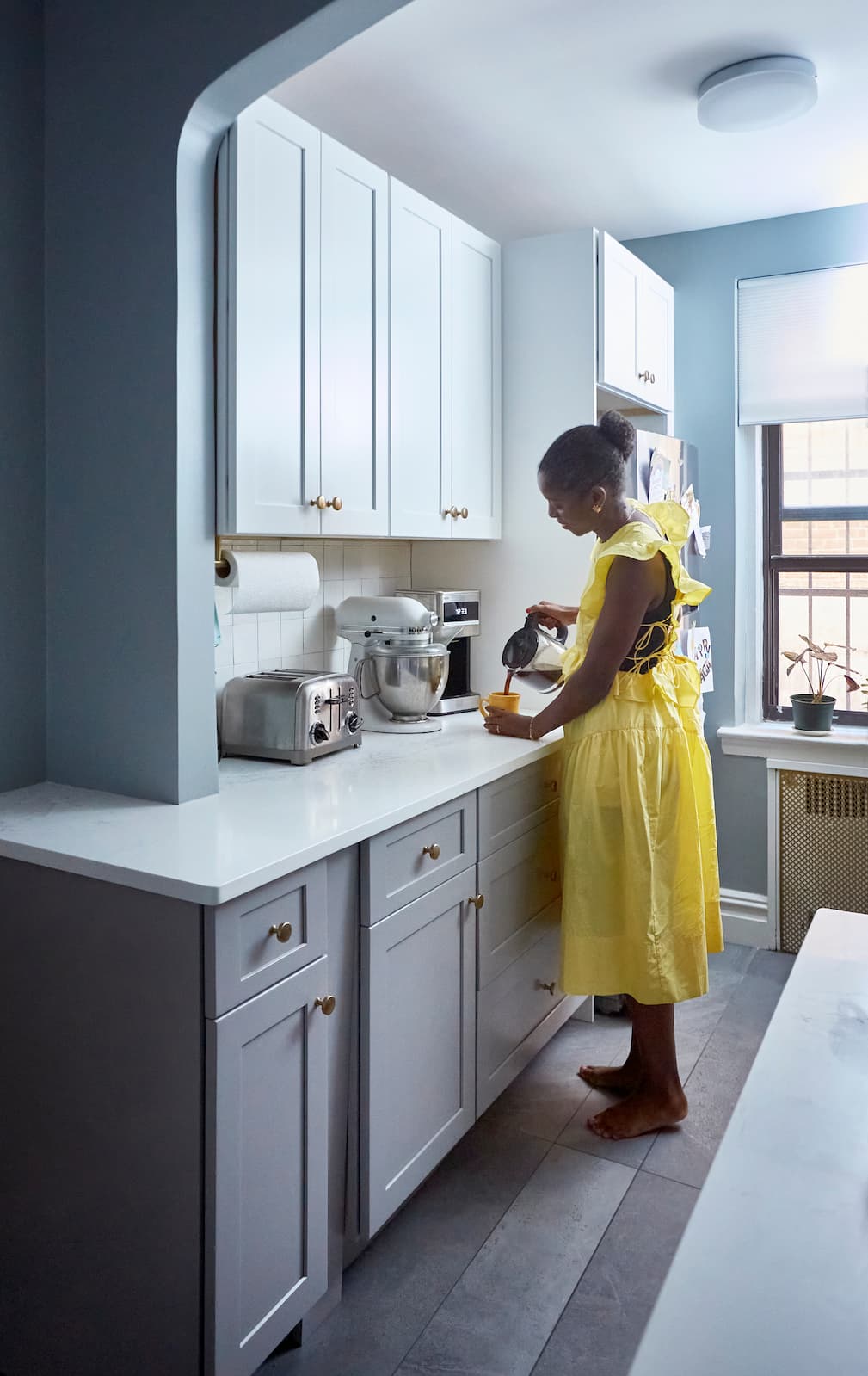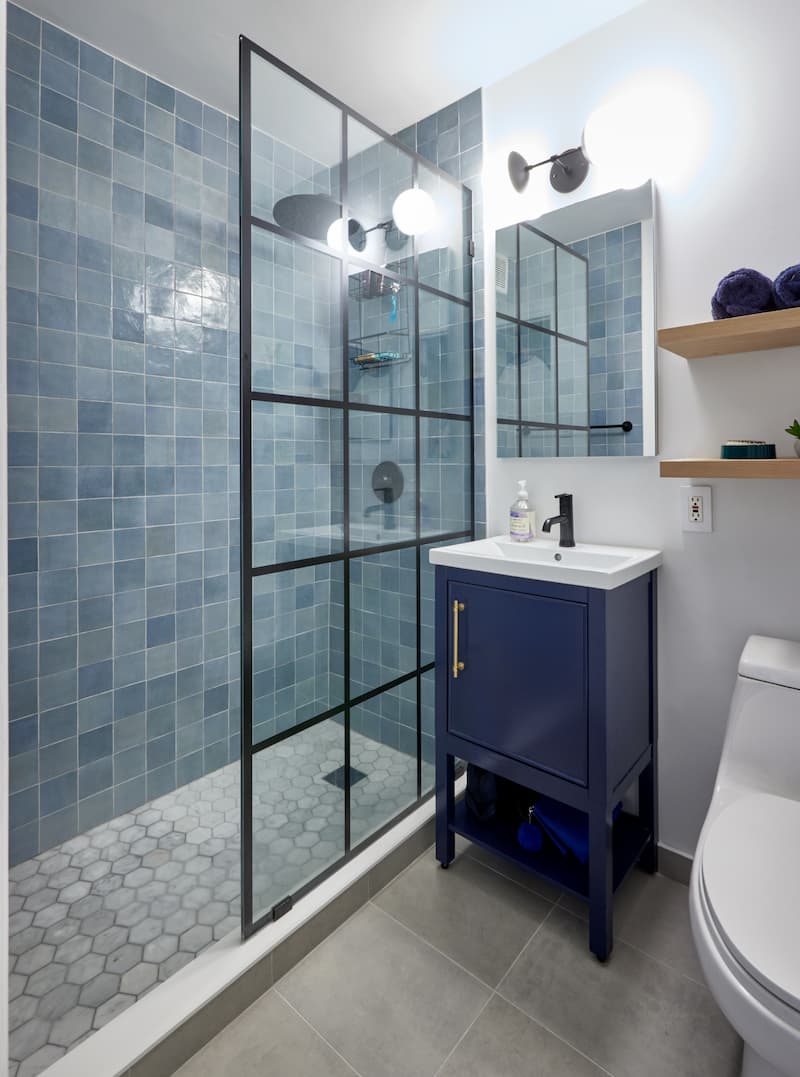A Guide to Modern Interior Door Styles for Every Room

In This Article
Interior doors do more than separate rooms—they help define the look and feel of your home. The right interior door style can add architectural interest, create a sense of flow, and even boost your home’s value. Whether you’re updating a single room or planning a full remodel, there are more interior door options than ever before. From classic panel doors to sleek, contemporary designs, you’ll find styles to suit every taste and space.
Below, you’ll find a range of modern and contemporary interior door styles, with ideas for internal doors that work in a variety of homes. We’ll also share tips for choosing the right door for your needs and how Block Renovation can help you complete your project.
Turn your renovation vision into reality
Get matched with trusted contractors and start your renovation today!
Find a Contractor
Shaker Panel Doors
Shaker panel doors are a timeless favorite, known for their clean lines and simple, recessed panels. This style works well in both traditional and modern homes, making it a versatile choice for bedrooms, bathrooms, and hallways. Shaker doors pair beautifully with minimalist decor, Scandinavian interiors, and transitional spaces that blend old and new. To make a bold, modern statement with a particular door style, consider painting it in a non-traditional color.
Estimated Cost: $120–$350 per door (not including hardware or installation)
Flush Doors
Flush doors feature a completely flat surface, offering a sleek, understated look that’s perfect for contemporary and mid-century modern homes. They’re often made from wood veneer or painted MDF, and their simplicity allows other design elements—like bold wall colors or statement hardware—to stand out. Flush doors are a great idea for open-plan layouts and modern spaces where you want a seamless, unobtrusive look.
Estimated Cost: $100–$300 per door
Glass Panel Doors
Glass panel doors bring light and openness to interior spaces. Specific styles range from full glass panels to doors with multiple glass inserts (like French doors or divided lites). Frosted or textured glass offers privacy while still letting light through, making these doors ideal for home offices, dining rooms, or even bathrooms. Glass panel doors work well in modern, industrial, and transitional homes.
Estimated Cost: $200–$600 per door (cost varies with glass type and frame material)
Barn Doors
Barn doors slide on a track above the doorway, saving space and adding a distinctive design element. They’re available in a range of materials, from rustic reclaimed wood to sleek painted finishes. Barn doors are especially popular in modern farmhouse, industrial, and eclectic interiors. They’re a smart solution for closets, pantries, or rooms where a swinging door would take up too much space.
Estimated Cost: $250–$700 per door (including hardware)
Pocket Doors
Pocket doors slide into the wall, disappearing completely when open. This makes them well-suited for small spaces, en suite bathrooms, or areas where you want to maximize usable floor space. Modern pocket doors come in a variety of finishes, from minimalist flush panels to glass inserts. They’re compatible with contemporary, mid-century, and even traditional homes when styled appropriately.
Estimated Cost: $300–$800 per door (installation can be more complex)
Five-Panel Doors
Five-panel doors feature horizontal or vertical panels, creating a subtle pattern that adds visual interest without overwhelming the space. This interior door style is a modern update on classic panel doors and works well in both historic homes and new builds. Five-panel doors are especially popular in craftsman, transitional, and cottage-style interiors.
Estimated Cost: $150–$400 per door
Louvered Doors
Louvered doors have horizontal slats that allow for ventilation while maintaining privacy. They’re commonly used for closets, laundry rooms, and utility spaces, but can also add a breezy, coastal feel to bedrooms or bathrooms. Louvered doors work well in beach-inspired, tropical, or casual contemporary homes.
Estimated Cost: $120–$350 per door
French Doors
French doors feature multiple glass panes and are typically used in pairs, creating an elegant transition between rooms. They’re perfect for home offices, dining rooms, or any space where you want to let in natural light while maintaining a sense of separation. French doors work well in both classic and contemporary interiors.
Estimated Cost: $400–$1,200 per pair
Design a Home That’s Uniquely Yours
Block can help you achieve your renovation goals and bring your dream remodel to life with price assurance and expert support.
Get Started
Tips for Choosing the Right Internal Door Style for Your Home
- Match the Door Style to Your Home’s Architecture: Consider the overall design of your home—modern, traditional, farmhouse, or eclectic—and choose a door style that complements it.
- Account for Acoustic Needs: If sound privacy is important—such as for bedrooms, offices, or media rooms—choose solid-core doors or doors specifically designed for sound reduction. These options help block noise transfer between rooms, making your home quieter and more comfortable.
- Think About Function: For high-traffic areas, choose durable materials and finishes. For rooms where privacy is key, opt for solid or frosted doors.
- Consider Light and Space: Glass panel and pocket doors can help brighten dark rooms and make small spaces feel larger.
- Plan for Consistency: While mixing styles can work in some contemporary homes, using a consistent door style throughout creates a cohesive, polished look.
- Don’t Forget Hardware: The right handles, hinges, and locks can elevate the look of your doors and tie the design together.
Renovate with confidence every step of the way
Step 1: Personalize Your Renovation Plan
Step 2: Receive Quotes from Trusted Contractors
Step 3: Let Us Handle the Project Details

Complete Your Home Remodel with Block Renovation
Upgrading your interior doors is a simple way to refresh your home’s style and function. Whether you’re drawn to sleek flush doors, classic panels, or bold barn doors, Block Renovation can help you bring your vision to life. Our team connects you with experienced contractors, provides clear pricing, and guides you through every step of your remodel. Ready to explore your interior door options? Start planning your project with Block today.

Written by Block Renovation
Frequently Asked Questions
Is replacing interior doors a DIY project?
Replacing an interior door can be a manageable DIY project if you’re comfortable with basic tools and measurements. Pre‑hung doors (which come with the frame attached) are generally easier for beginners, as they eliminate the need to align hinges perfectly with an existing frame. Slab doors (just the door itself) require more precision, since you’ll need to cut hinge mortises and possibly trim the door to fit.
That said, even a “simple” swap can get tricky if your home’s frames aren’t perfectly square or if you’re working with older construction. If you’re unsure about your skill level—or if the style of door is unusually heavy, oversized, or part of a more complex remodel—it’s worth bringing in a contractor. A pro can ensure a perfect fit, smooth swing, and clean finish, saving you time and frustration.
How do I add a door to an empty archway or opening?
Adding an interior door to an open archway or pass‑through involves more than just hanging a slab—you’ll need to create a proper frame. This usually means installing studs, a header, and jambs to support the door and hardware. Once the frame is in place, you can choose between a pre‑hung door for easier installation or a custom‑sized slab if the opening is non‑standard.
In most cases, especially with load‑bearing walls or unusual openings, a contractor’s expertise can help avoid costly mistakes. They can also help you choose a door style that complements the surrounding interior space and meets your functional needs.
How can I make sure a new door fits an existing frame?
The key to fitting a new interior door into an existing frame is precise measurement. Start by measuring the height, width, and thickness of your current door, as well as the hinge locations and spacing. You’ll also want to note the placement of the doorknob and latch so the new door aligns with the existing strike plate.
If your frame is slightly out of square—a common issue in older homes—you may need to trim the door or adjust the hinges for a proper fit. Ordering a custom‑sized slab can save time, but if you’re working with a standard size, be prepared to make small adjustments. A contractor or carpenter can ensure a perfect fit, especially if you want a seamless look and smooth operation.
What’s the best type of interior door for reducing noise between rooms?
For sound reduction, solid‑core doors are the top choice. Unlike hollow‑core doors, which have a lightweight honeycomb or cardboard interior, solid‑core doors are filled with dense material that blocks and absorbs sound more effectively. They also feel sturdier and provide a more substantial barrier between rooms.
If you want even better noise control, pair a solid‑core door with quality weatherstripping or a door sweep to seal gaps around the edges. This is especially useful for home offices, bedrooms, or media rooms where privacy and quiet are priorities. While solid wood doors also perform well, solid‑core options often provide a good balance of sound control, durability, and cost.
How do I choose the right hinges and hardware for a new interior door?
The right hinges and hardware depend on the weight, style, and function of your door. Heavier doors, like solid‑core or solid wood, require stronger hinges—usually three per door for standard heights, and sometimes four for taller or heavier models. The finish of your hinges should coordinate with your doorknob or handle for a cohesive look.
When it comes to handles and locks, think about how the room will be used. Privacy knobs or levers are ideal for bedrooms and bathrooms, while passage sets (no lock) work well for hallways and closets. For a modern touch, consider sleek lever handles; for a more traditional look, classic round knobs are timeless. Quality hardware not only improves function but also adds a finishing detail that elevates the entire space.

Renovate confidently with Block
Easily compare quotes from top quality contractors, and get peace of mind with warranty & price protections.
Thousands of homeowners have renovated with Block

4.5 Stars (100+)

4.7 Stars (100+)

4.5 Stars (75+)
Renovate confidently
- Top quality contractors
- Warranty & price protections
- Expert resources

